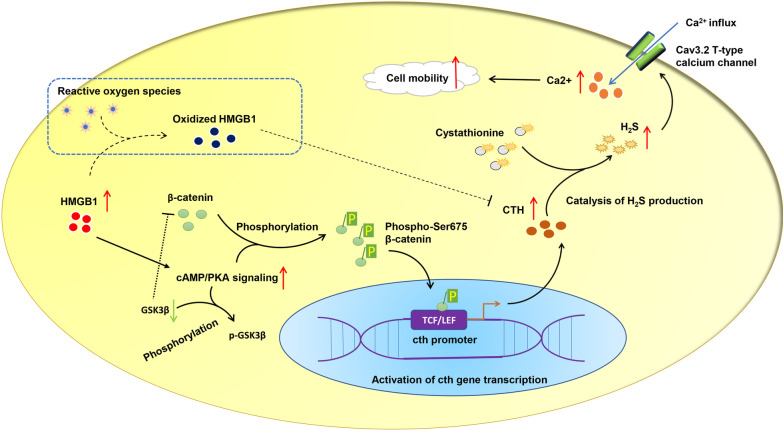Fig. 7.
Illustration of mechanisms that HMGB1 modification improves the mobility of mesenchymal stem cells. HMGB1 activates cAMP/PKA to stabilize β-catenin by phosphorylation of GSK3β and β-catenin at Ser675, enabling β-catenin to accumulate intracellularly and translocate into the nucleus. The CTH promoter is thereafter activated by interaction of β-catenin with TCF/LEF, stimulating gene transcription. Cytoplasmic CTH catalyzes endogenous production of hydrogen sulfide from organic sulfide substrates like cystathionine. The Cav 3.2 T-type calcium channel is activated by hydrogen sulfide to drive extracellular calcium influx, and calcium signaling pathway is subsequently activated to promote cell mobility. Besides, HMGB1 presumably interacts with CTH to inhibit the catalysis of hydrogen sulfide production when it is oxidized by oxidative stress

